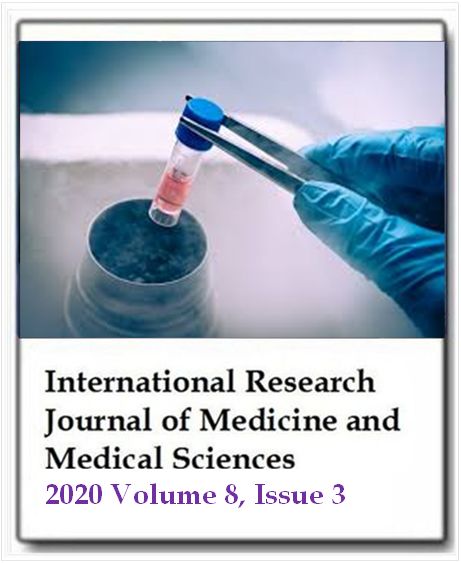Topographical anatomy and morphometrical analysis of the pharyngeal orifice of the Eustachian tube: A cadaveric study
Hanan J. Alzahrani, Afnan J. Alzahrani and Wafa’a S. RamadanInternational Research Journal of Medicine and Medical Sciences
Published: August 26 2020
Volume 8, Issue 3
Pages 97-108
DOI: https://doi.org/10.30918/IRJMMS.83.20.039
Abstract
The auditory tube (Eustachian tube) is a highly functional organ that works as a channel between the middle ear and the nasopharynx and has three major functions; protection, clearance, and ventilation, each of which depends on a specific structural part. In order for the tube to work and function correctly and normally, the middle ear has to be healthy. Many of the complications and middle ear diseases with increasing prevalence are affected by various factors that cause disturbances in the Eustachian tube functions. The anatomical differences of the Eustachian tube among the multiple age groups could explain the functional differences between them. The limited access to the Eustachian tube is one of the reasons that anatomical uncertainty of the tube still exists therefore, we studied and measured the morphometric parameters of the pharyngeal orifice of the auditory tube and its anatomical variation importance as a landmark in 50 specimens of adult cadavers in total and also explained the results statistically by using means, averages, standard deviations and correlation coefficient. The findings of this study are needed and should be taken into account as established anatomical data before performing some otorhinolaryngeal procedures so that undesired interventions and clinical outcomes could be avoided. Also, the results will play a significant role in understanding the tube dysfunction and the etiological paths of the middle ear diseases and disorders which would be beneficial in planning the best surgical treatments of these ailments.
Keywords: Auditory tube, Eustachian tube, middle ear, nasopharynx, pharyngeal orifice, anatomical morphometry, Eustachian tube injury.
Full Text PDFThis article is published under the terms of the Creative Commons Attribution License 4.0

